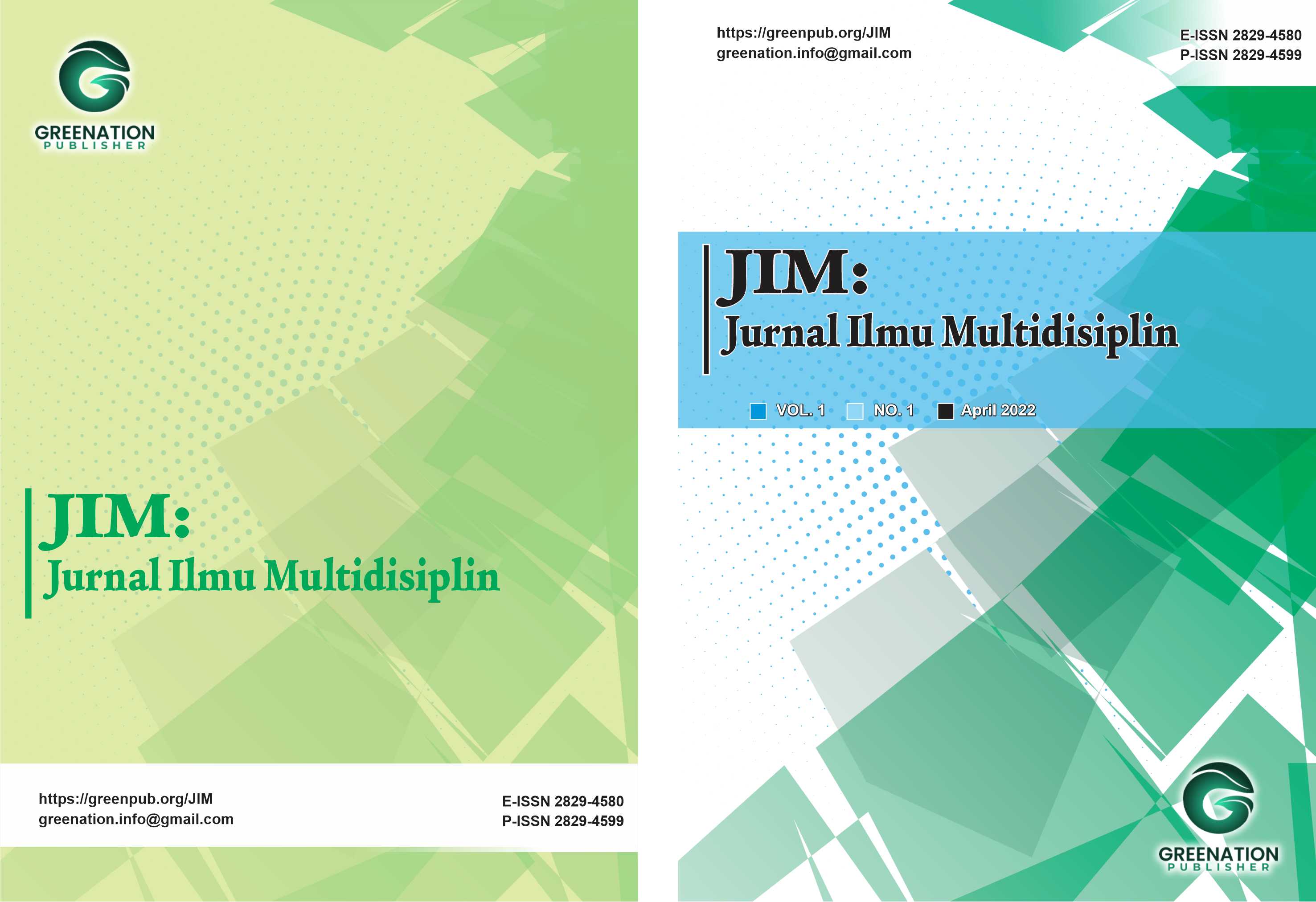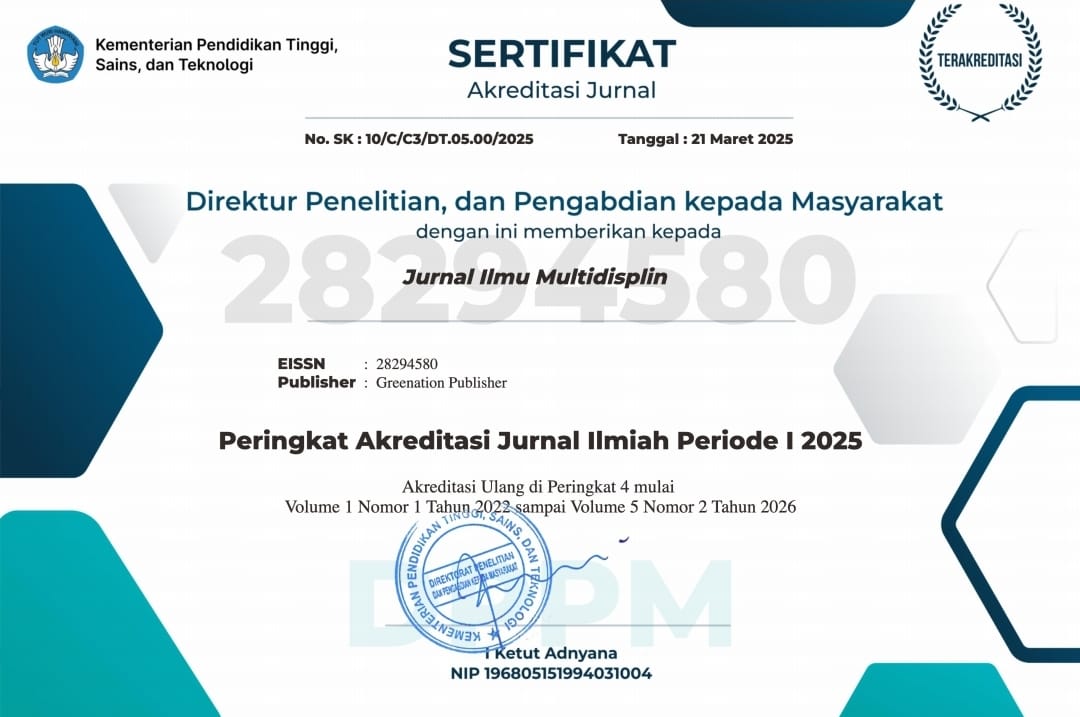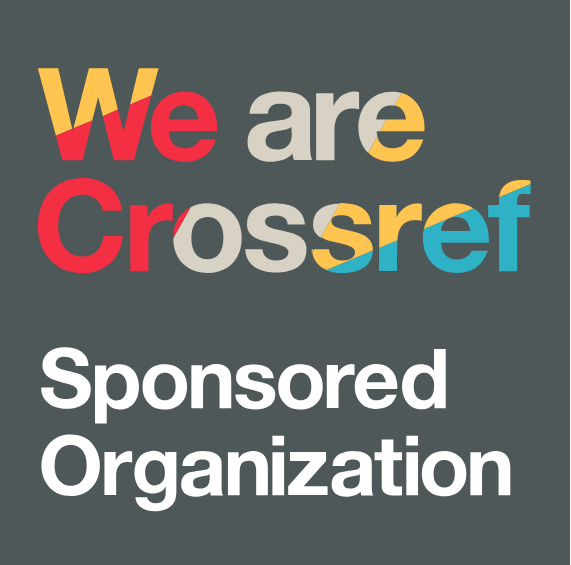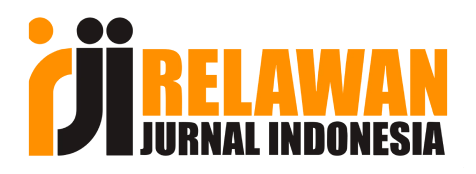Studi Pengakuan dan Perlindungan Hak atas Tanah Masyarakat Adat Lamaholot dari Perspektif Hubungan Internasional
DOI:
https://doi.org/10.38035/jim.v4i2.1093Keywords:
Mayarakat adat Lamaholot, Hak atas tanah, Budaya, Norma InternationalAbstract
Penelitian ini membahas terkait perjuangan masyarakat adat Lamaholot dalam melindungi hak atas tanah dan budaya mereka melalui perspektif hubungan internasional. Menggunakan teori konstruktivisme oleh Alexander Wendt dan Indigenous Paradigm sebagai landasan analisis, penelitian ini menyoroti bahwa pengakuan dan perlindungan hak-hak masyarakat adat terkhususnya Lamaholot tidak hanya dipengaruhi oleh aspek hukum, tetapi juga oleh konstruksi sosial, nilai-nilai budaya dan norma internasional yang berkembang. Teori konstruktivisme menekankan bahwa identitas dan kepentingan masyarakat adat Lamaholot dibentuk melalui proses sosial dan interaksi dengan norma global, sementara Indigenous paradigm menegaskan pentingnya pengakuan kolektif, spritualitas serta hubungan hostolik antara manusia dan alam. Metode yang digunakan dalam penelitian adalah metode kualitatif dengan pendekatan kualitatif-deskriptif, teknik pengumpulan data meliputi wawancara, dokumen resmi dan sumber-sumber sekunder yang relevan. Studi ini menemukan bahwa meskipun terdapat pengakuan secara konstitusional dan internasional, implementasi perlindungan hak masyarakat adat di Indonesia masih menghadapi tantangan akibat kebijakan yang top-down dan minimnya partisipasi masyarakat adat. Penelitian ini merekomendasikan perlunya kebijakan yang lebih inklusif dan berkeadilan, dengan melibatkan masyarakat adat secara aktif dalam pengambilan keputusan, demi menjaga keberlanjutan identitas budaya dan hak atas tanah masyarakat Lamaholot di tengah tekanan globalisasi dan eksploitasi sumber daya alam.
References
Alfred, T. (2005). Peace, power, righteousness: An Indigenous manifesto. Oxford University Press.
Aliansi Masyarakat Adat Nusantara (AMAN). (2019). Hak Masyarakat Adat atas Tanah dan Wilayah. Jakarta: AMAN. Diakses dari https://www.aman.or.id/
Alyanada, A., & Iskandar, I. (2023). Peran Aliansi Masyarakat Adat Nusantara dalam Mendukung Implementasi United Nations Declaration on the Rights of Indigenous Peoples di Indonesia. Journal of International and Local Studies, 7(1), 1-15. Diakses dari https://journal.unibos.ac.id/jils/article/view/1848
Anaya, S. J. (2004). Indigenous peoples in international law. Oxford University Press, USA. Diakses dari https://www.cambridge.org/core/journals/american-journal-of-international-law/article/abs/indigenous-peoples-in-international-law-by-s-james-anaya-new-york-oxford-oxford-university-press-1996-pp-xi-227-index-45/3914AEF27B20A9841BBC2820044B91E9
Braun, V., & Clarke, V. (2006). Using thematic analysis in psychology. Qualitative Research in Psychology, 3(2), 77-101.
Caulley, D. N. (2007). Qualitative research for education: An introduction to theories and methods. Qualitative Research Journal, 7(2), 106-108.
Creswell, J. W. (2014). Research design: Qualitative, quantitative, and mixed methods approaches (4th ed.). Sage Publications.
Erueti, A. (2022). The UN declaration on the rights of indigenous peoples: A new interpretative approach. Oxford University Press. Diakses dari https://utoronto.scholaris.ca/server/api/core/bitstreams/6916c284-6b7d-4cb5-b816-615d6ff99db3/content
Jackson, R., & Sorensen, G. (2013). Introduction to International Relation: Theories and Approaches, Fifth Edition. Oxford University Press.
Kaltsum, L. U., & Tsauri, M. N. (2020). Kepercayaan Animisme dan Dinamisme dalam Masyarakat Muslim Nusa Tenggara Timur. Diakses dari https://repository.uinjkt.ac.id/dspace/bitstream/123456789/61371/2/9%20Kepercayaan%20Animisme%20dan%20Dinamisme%20dalam%20Masyarakat%20Muslim%20Nusa%20Tenggara%20Timur.pdf
Khaidar, N., & Nugraha, M. A. (2022). Protection of Indigenous Peoples (Local Beliefs) in the Context of Human Rights in Indonesia. Contemporary Issues on Interfaith Law and Society, 1(2), 101-130. Diakses dari http://journal.unnes.ac.id/sju/index.php/ciils/article/view/58319
Kogut, B., & Singh, H. (1988). The Effect of National Culture on the Choice of Entry Mode. Journal of International Business Studies, 19(3), 411-432. Diakses dari https://link.springer.com/article/10.1057/palgrave.jibs.8490394
Kovach, M. (2021). Indigenous methodologies: Characteristics, conversations, and contexts. University of Toronto press. Diakses dari https://books.google.co.id/books?hl=id&lr=&id=0V47EAAAQBAJ&oi=fnd&pg=PP1&dq=Indigenous+Methodologies:+Characteristics,+Conversations,+and+Contexts&ots=OK2uctYbJy&sig=456s1-McMFxCKZQwyzatnodzJTc&redir_esc=y#v=onepage&q=Indigenous%20Methodologies%3A%20Characteristics%2C%20Conversations%2C%20and%20Contexts&f=false
Lubis, A., Kaban, M., & Ikhsan, E. (2024). The Development of Recognition and Protection of the Customary Rights of Indigenous Peoples in Indonesia. KnE Social Sciences, 209-224. Diakses dari https://kneopen.com/KnE-Social/article/view/14717/
Ndaumanu, F. (2018). Kebijakan Pemerintah Daerah Terhadap Upaya Perlindungan Dan Penghormatan Masyarakat Hukum Adat Di Kabupaten Alor Provinsi Nusa Tenggara Timur. Jurnal HAM, 9(1), 37-49. Diakses dari https://core.ac.uk/download/pdf/268381826.pdf
Ola, S. S., & Kroon, Y. B. (2020). PERSEPSI TENTANG TANAH MENURUT ORANG LAMAHOLOT DI SOLOR BARAT FLORES TIMUR, NUSA TENGGARA TIMUR. Jurnal Lazuardi, 3(1), 402-415. Diakses dari https://ejurnal-pendidikanbahasaundana.com/index.php/lazuardijournal/article/view/29
Smith, L. T. (2012). Decolonizing methodologies: Research and Indigenous peoples (2nd ed.). Zed Books.
United Nations. (2007). United Nations Declaration on the Rights of Indigenous Peoples. Diakses dari https://www.un.org/development/desa/indigenouspeoples/declaration-on-the-rights-of-indigenous-peoples.html
Yumantoko, Y. (2020). Kajian Kebijakan dalam Merekognisi Masyarakat Adat. Jurnal Belantara, 3(1), 48-58. Diakses dari https://core.ac.uk/download/pdf/288194465.pdf
Zamrud, W. O., & Salam, S. (2022). Human Right and Indigenous Peoples: Transitional Justice Approach. International Journal of Scientific Research in Science and Technology, 9(4), 98-109. Diakses dari https://ijsrst.com/home/issue/view/article.php?id=IJSRST229411
Downloads
Published
How to Cite
Issue
Section
License
Copyright (c) 2025 Lidya Suratena, Christian H.J de Fretes, Petsy Jessy Ismoyo

This work is licensed under a Creative Commons Attribution 4.0 International License.
You are free to:
- Share— copy and redistribute the material in any medium or format
- Adapt— remix, transform, and build upon the material for any purpose, even commercially.
The licensor cannot revoke these freedoms as long as you follow the license terms.
Under the following terms:
- Attribution— You must give appropriate credit, provide a link to the license, and indicate if changes were made. You may do so in any reasonable manner, but not in any way that suggests the licensor endorses you or your use.
- No additional restrictions— You may not apply legal terms or technological measures that legally restrict others from doing anything the license permits.
Notices:
- You do not have to comply with the license for elements of the material in the public domain or where your use is permitted by an applicable exception or limitation.
- No warranties are given. The license may not give you all of the permissions necessary for your intended use. For example, other rights such as publicity, privacy, or moral rightsmay limit how you use the material.




























